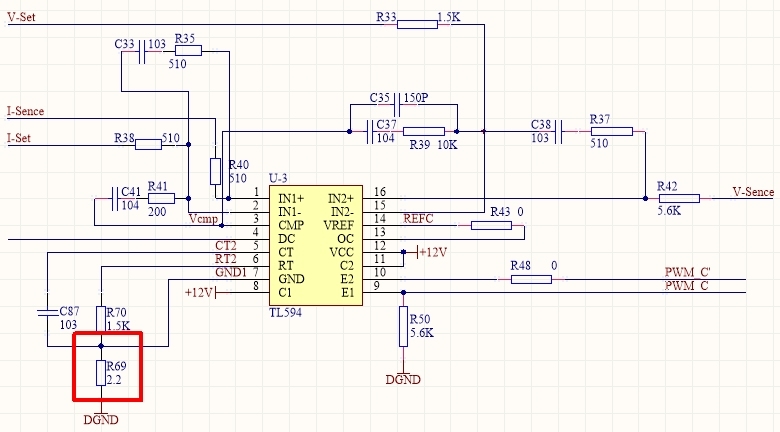Dear TI Engineer,
I want to konw how to reduce the deadtime of TL594, according the datasheeet, if add the deadtime can through increase 4 pin voltage, so I need to reduce the deadtime whether may reduce the 4pin voltage to realize. Now, I have encounter two problem need the answers.
1)How to decrease the voltage of Pin 4? Because the inner have a 0.12V voltage source.
2)Whether can be add the 5Pin voltage to realized? The SCH as below. I had test the PWM by oscilloscope, the deadtime actually decrease. Sometimes the chip will stop work, If reduce the R69 resistance to 1Ohm, the chip will work normally. I want to konw what causes the chip failure.
Waiting for your reply, many thanks!


